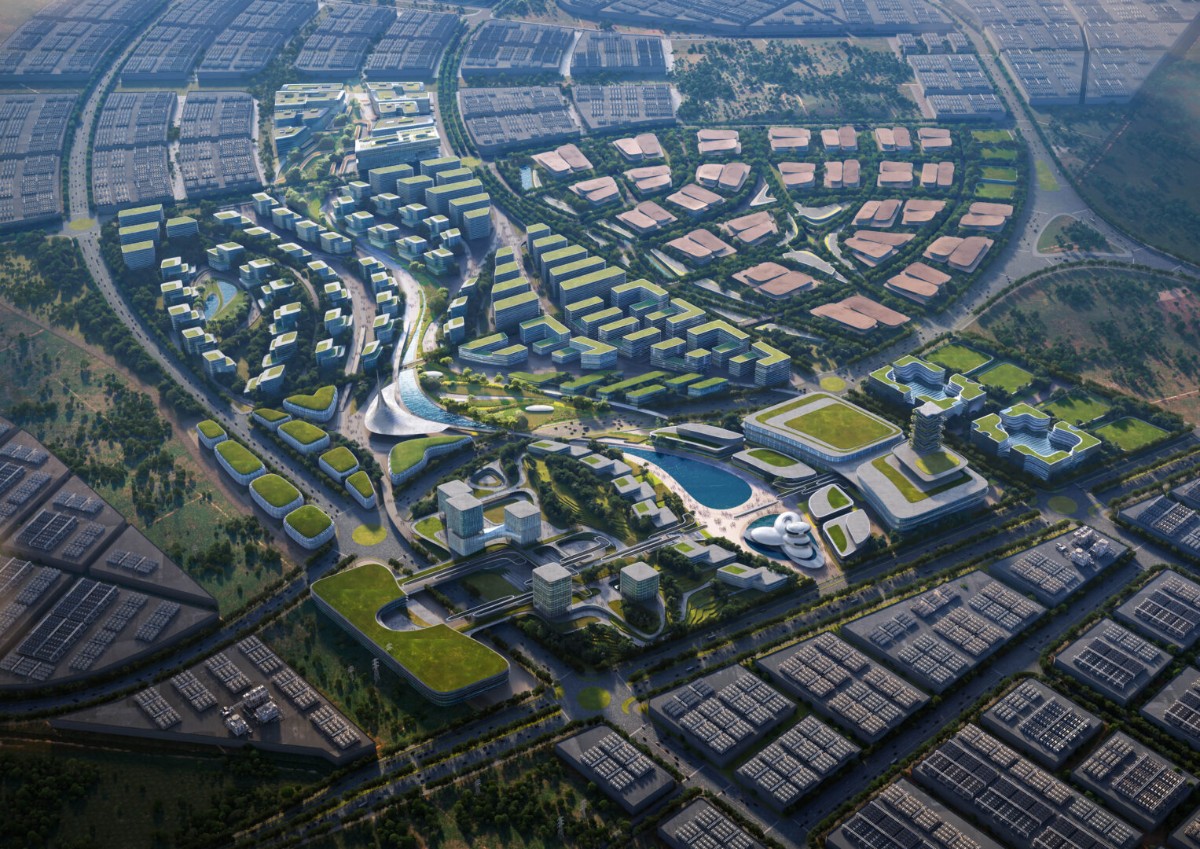
The global economy is undergoing rapid transformation, driven by technological disruption, sustainability imperatives and an unprecedented reconfiguration of global supply chains. Johor stands not just at the threshold but at the forefront of this transformation, poised to harness these global shifts and assert itself as a leader in Southeast Asia’s innovation economy.
Historically, Johor has been Malaysia’s industrial backbone, excelling in high-value manufacturing and leveraging its strategic position next to Singapore. However, as global dynamics evolve, Johor is driving the transformation of industries and ecosystems, positioning itself as Southeast Asia’s premier innovation corridor.
The Johor-Singapore Special Economic Zone (JS-SEZ) launched in January serves as a powerful platform for this transformation. Beyond being an economic agreement, the JS-SEZ represents an ecosystem designed to integrate cutting-edge research, frontier industries, sustainable manufacturing and a next-generation workforce into a cohesive, cross-border innovation framework.
This collaboration is where Johor’s future takes shape, not as a passive participant in regional growth but as a bold architect of Southeast Asia’s economic redefinition.
An innovation corridor thrives when it attracts the brightest minds, risk-taking entrepreneurs and visionary investors. Johor’s success will hinge on its ability to create not just industries, but also dynamic ecosystems where innovation is born, nurtured and scaled.
From industrial hub to innovation corridor
A truly successful innovation corridor transcends the traditional focus on infrastructure; it must embody an integrated ecosystem where digital and physical assets converge seamlessly. Johor’s economic hubs must evolve into dynamic, intelligent networks capable of optimising processes, simulating real-world conditions and accelerating the path to commercialisation.
While the JS-SEZ provides the foundation with key growth sectors, the next frontier lies in translating this groundwork into catalytic projects that redefine entire industries. Initiatives in the bioeconomy and food security, for instance, are particularly critical, offering pathways to sustainable industrialisation and reinforcing Johor’s position as a regional economic leader.
Central to this transformation is the role of digital twin technology, which enables real-time intelligence and operational efficiency. These virtual models replicate industrial and urban environments, allowing stakeholders to make data-driven decisions, monitor cross-border activities and respond to challenges with agility.
However, technological evolution alone is not enough. Johor must reimagine its innovation governance, crafting a facilitation framework that not only integrates digital technologies but positions its economic assets as drivers of next-generation industries. This governance model must prioritise investor confidence, creating transparent, predictable pathways for growth while ensuring JS-SEZ emerges as a thriving hub for transformative industries.
Learning from global innovation hubs
Some of the most successful innovation hubs, such as Shenzhen, Silicon Valley, Paris-Saclay, Munich, the Knowledge Quarter in London, the Innovation District Euston or London Innovation District, the Shift Olympic Park and White City, were not simply the result of favourable policies or incentives. These ecosystems were designed as gravitational centres that attracted the world’s brightest minds, boldest entrepreneurs and cutting-edge research institutions.
For Johor, the challenge lies not in replication but in innovation. To truly lead in Southeast Asia, Johor must embed advanced research and development (R&D), strengthen industry-academia linkages and foster bold investment frameworks that attract next-generation industries.
Global leaders in innovation, such as the vCity project by the Barcelona Supercomputing Centre, are already leveraging digital twin technologies to revolutionise urban planning and optimise infrastructure. Johor has the opportunity to learn from these models while crafting a forward-looking ecosystem that enhances efficiency, connectivity and decision-making.
Emerging research on digital twins underscores their transformative potential — not just for optimising industrial and urban environments but for enabling seamless cross-border collaboration. Concepts like the Internet of Federated Digital Twins (IoFDT) remain in development, but Johor can set a precedent by applying digital twins in high-impact, practical scenarios.
The goal is to make Johor’s innovation corridor a living laboratory for next-generation connectivity and operational intelligence. Johor has the opportunity to set a global benchmark by integrating its innovation corridor into interconnected cross-border ecosystems.
Johor’s key advantages
Johor has several key advantages that provide the foundation for its evolution into a world-class innovation corridor. For one, it has strategic positioning and cross-border connectivity. The JS-SEZ will deepen Johor’s integration with Singapore’s advanced R&D ecosystem and capital markets, creating a dual engine for high-value innovation and commercialisation.
Johor also has a thriving digital and artificial intelligence (AI) economy. The state is fast emerging as a regional data centre hub, attracting global tech leaders like Microsoft and ByteDance. The next step is to evolve beyond hosting data centres to becoming a hub for AI-driven automation, smart logistics and deep tech industries.
Additionally, Ibrahim Technopolis (IBTEC), which is designed to be Asean’s most advanced smart industrial township, is the future of innovation and smart industrialisation, and a living lab where Industry 4.0, AI and sustainable energy solutions converge to redefine industrialisation.
Sustainable and green innovation are also important. Sustainability in today’s economy demands more than energy efficiency or carbon reduction. It requires intelligent, data-driven resource optimisation. By embedding digital twin technology, Johor can ensure its smart cities, industries and logistics hubs operate with maximum efficiency, minimising waste, energy use and urban congestion.
There is a future-ready workforce in Johor as well. The talent race will define the success of innovation corridors. Johor must not only develop its workforce but also create an environment that attracts the brightest global minds, ensuring it remains a magnet for high-impact talent and a key player in the innovation economy.
Johor Corporation (JCorp) plays a pivotal role in accelerating industrial transformation and shaping the investment landscape that will define Johor’s next phase of economic growth. As the state’s largest enterprise, JCorp’s ability to structure investments, forge industry partnerships and build sectoral ecosystems makes it a key driver of economic shifts.
A core priority is ensuring that IBTEC evolves into Asean’s premier hub for AI, biotech and deep tech industries, not just by providing infrastructure but also by creating the conditions for these industries to thrive. This demands strategic collaboration with global technology firms, investors and research institutions to establish Johor as a competitive and indispensable part of the global innovation network.
Beyond 2025: Johor’s moonshot vision for 2035
The next decade is not just about growth — it is about defining a new economic model for Southeast Asia. By 2035, Johor will not just be a leading innovation corridor; it will be the benchmark for how AI-driven economies, ESG-led industries and frontier research hubs converge to shape the region’s economic future.
Johor is defining the future of regional innovation, setting the pace for Southeast Asia’s economic transformation. The next decade will define whether Johor emerges as Asean’s leading innovation corridor, attracting global talent, capital and technology.
Leading JCorp, I see first-hand the energy, ambition and momentum shaping this transformation. The opportunity before us is unprecedented, and the responsibility to act is undeniable.
Johor’s rise is not a possibility — it is already in motion. The next decade won’t be defined by how well Johor keeps pace with global trends, but by how it leads them. The future of Southeast Asia’s innovation economy is unfolding, and Johor is ready to lead the way.
Datuk Syed Mohamed Syed Ibrahim is president and chief executive of Johor Corporation (JCorp)
- Malaysian stocks rebound, broad relief rally adds back RM73 bil to market
- Trump's big blunder — and no, it's not tariff per se
- Gamuda, IJM, MRCB, SunCon could bid for Penang International Airport's main terminal building under Package 3 in May, estimated at RM1.2b — CIMB
- AmBank grants RM307m in financing to Chin Hin Group for infrastructure projects
- Senator Adam Schiff calls for insider trading investigation into Trump over tariff pause
- MSM sued by Ranhill over termination of effluent treatment plant project in Johor
- Prada agrees to buy Versace for US$1.38b despite tariffs
- Perak eyes RM72b investments for Lumut Maritime Industrial City
- Malaysian stocks rebound, broad relief rally adds back RM73 bil to market
- US inflation unexpectedly cools ahead of tariffs impact


